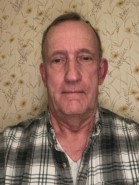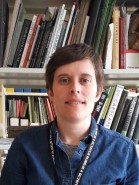
Come join HamSCI at its fourth annual workshop! Due to restrictions caused by COVID-19, this year's workshop will he held as a free virtual workshop. The meeting will take place March 19-20, 2021 using Zoom hosted by The University of Scranton in Scranton, PA and sponsored by the National Science Foundation. The primary objective of the HamSCI workshop is to bring together the amateur radio community and professional scientists. The theme of the 2021 HamSCI Workshop is midlatitude ionospheric science. Invited speakers include Dr. J. Michael Ruohoniemi, Virginia Tech Professor and Principal Investigator of the Virginia Tech SuperDARN Initiative, and Joe Dzekevich K1YOW, an amateur radio citizen scientist who recently published his work in CQ Magazine. Dr. Elizabeth Bruton of the Science Museum of London will be the Keynote Speaker.
This workshop will also serve as a team meeting for the HamSCI Personal Space Weather Station project, an NSF-funded project to develop a citizen science instrument for studying space weather from your backyard. The PSWS is led by the University of Scranton, and includes participation from TAPR, Case Western Reserve University/W8EDU, the University of Alabama, the New Jersey Institute of Technology CSTR, MIT Haystack Observatory, Dartmouth College, and the amateur radio community at large.
Participation in the 2021 HamSCI Workshop will be via Zoom Webinar. Registration and participation is free and open to all. To prepare and make sure you are ready to participate in the 2021 HamSCI Workshop, please visit the Zoom Website download the client software. The Zoom client will work on Windows, Apple OS X, Linux, Android, iPad, and iPhone.
This meeting is being recorded and will be available later.
Community Participation Guidelines
All participants in the HamSCI workshop must adhere to the HamSCI Community Participation Guidelines. Those that do not follow these guidelines will be asked to leave.

Abstract: The midlatitude portion of the ionosphere is located roughly between 30° and 60° magnetic latitude, where the vast majority of radio amateurs operate. The midlatitude ionosphere has historically been considered less ‘active’ than the high-latitude auroral regions or the low-latitude equatorial zone and has received less scientific attention. However, the bulk of humanity lives at these latitudes and major vulnerabilities to space weather disturbance are found there. Some will be well-known to radio amateurs operating HF communications links. Increased interest in the midlatitude ionosphere has spurred the deployment of new observational facilities such as the midlatitude component of SuperDARN and the Personal Space Weather Station. In this tutorial, Dr. Ruohoniemi will present a review of the physics of the midlatitude ionosphere, discuss recent advancements and open questions at the frontiers of research, and consider means by which the amateur radio community can contribute to advancing scientific understanding and technical capabilities.
Bio: Dr. J. Michael Ruohoniemi is a professor of electrical engineering at Virginia Tech and Principal Investigator of the
Virginia Tech Super Dual Auroral Radar Network (SuperDARN) Laboratory. Dr. Ruohoniemi earned his B.S. from the University of King's College and Dalhousie University, Nova Scotia in 1981 and his Ph.D. from the University of Western Ontario in 1986. After graduation he joined the team at the Johns Hopkins University Applied Physics Laboratory that developed HF radar into the SuperDARN concept to study the auroral (high-latitude) ionosphere. As a faculty member at Virginia Tech, he led a consortium of universities in building a chain of SuperDARN radars at midlatitudes across the U.S. His scientific publications now have over 9,700 citations. Today, 12 of the more than 30 radars in the SuperDARN network make continuous observations of the midlatitude ionosphere in both hemispheres, and these observations have been instrumental in advancing midlatitude ionospheric science in numerous studies.
Abstract: Amateurs may ask, “Why do we see Sporadic E like propagation in November and December, when many of the variables like UV radiation and solar exposure are at a minimum, unlike the very active sporadic-E summer months?” How are sporadic-E transatlantic VHF communications possible between North America and Europe? In his tutorial, Joe K1YOW will explain what Sporadic E is, how amateur operators use Sporadic E to enable long-distance VHF communications, current theories of Sporadic E formation, and how we might be able to better understand Es formation by examining amateur radio propagation logs. Joe’s studies of Sporadic E using amateur radio have been published both in
QST (2017) and
CQ Magazine (2020).
Bio: Joe Dzekevich, K1YOW, was first licensed in 1962 and currently holds an Amateur Extra Class license. He graduated from Northeastern University in 1977 with a B.S. in Industrial Technology and holds a M.B.A. from Clark University (1985). Joe is currently a retired Reliability Engineering Fellow who has worked for Bell Telephone Labs, Digital Equipment Corporation, Chipcom/3Com and Raytheon. Joe is also a senior member of the IEEE Reliability Society, where he held various offices in the local IEEE Boston Reliability Chapter and developed and taught many of the chapter’s courses. He is a member of NVARC (Nashoba Valley Amateur Radio Club), the ARRL, and HamSCI. He has always been interested in radio propagation, starting back in 1965 where he subscribed to the CRPL (Central Radio Prediction Lab) Ionospheric Predictions, where one used monthly CRPL prediction maps to chart predicted E-Layer and F-Layer radio paths.
Abstract: This talk will explore developments in the history, science, technology, and licensing of radio amateur communities from the early 1900s through to the present day, exploring how individuals and communities contributed to “citizen science” long before the term entered popular usage in the 1990s. I will also explore how these community-led developments can inspire the next generation’s interest in science, technology, engineering, and mathematics (STEM), citizen science, and amateur radio.
Bio: Dr Elizabeth Bruton is Curator of Technology and Engineering at the Science Museum, London, specializing in the history of communications. Prominent aspects of this role include curator of
“Top Secret: From ciphers to cyber security” exhibition, which explored over a century’s worth of communications intelligence through hand-written documents, declassified files and previously unseen artefacts from the Science Museum Group's and GCHQ’s historic collections, and serving as co-Investigator on the
“Electrifying Women: Understanding the Long History of Women in Engineering”, a nine-month Arts & Humanities Research Council (AHRC) project with Professor Graeme Gooday at the University of Leeds. Dr Bruton holds three degrees: a BAI in Computer Engineering from Trinity College, Dublin (2004); an MSc in history of science from the University of Oxford (2005) with a dissertation on “Marconi Wireless Telegraphy in the British Army during World War One”; and an AHRC-funded Collaborative Doctoral Award PhD with BT Archives and IET Archives at the University of Leeds on “Beyond Marconi: the roles of the Admiralty, the Post Office, and the Institution of Electrical Engineers in the invention and development of wireless communication up to 1908” (2013). Last and definitely not least, Dr Bruton has been non-licensed member of Oxford & District Amateur Radio Society since 2014 and their web manager since 2015.
Although an amateur radio license is not a prerequisite to participate in HamSCI, we recommend that participants pursue a license. Getting a Technician Class license requires passage of a 35 question multiple choice test with a public question pool.
Free study resources and practice tests are available online and online exams are available through W5YI for a nominal fee.
- Dr. Nathaniel Frissell, W2NAF, University of Scranton, Chair
- Dr. Philip Erickson, W1PJE, MIT Haystack Observatory
- Dr. Dev Joshi, KC3PVE, University of Scranton
- Ms. Kristina Collins, KD8OXT, Case Western Reserve University
- Mr. Bill Liles, NQ6Z, HamSCI Community
- Ms. Veronica Romanek, KD2UHN, University of Scranton
- Ms. Laurie McCoy, University of Scranton
Please e-mail hamsci@hamsci.org.

The 2021 HamSCI Workshop is hosted by The University of Scranton. Financial support is provided by the United States National Science Foundation through AGS-2002268.





